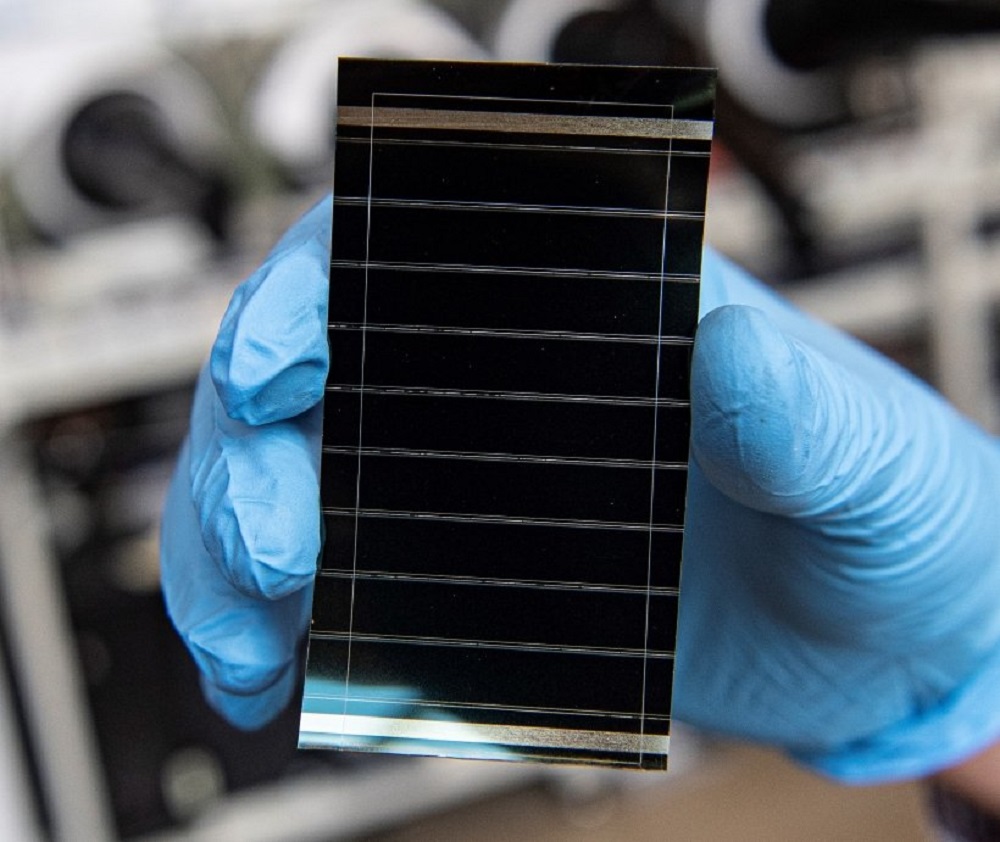An international research team has used Lewis molecules to improve the efficiency and stability of a perovskite solar cell that is built with a fully encapsulated catch stactics aimed at reducing perovskiet surface defects. The cell achieved a certified power conversion -efficiency of 25.18% and a champion efficiency of 25.37%.
An international research team has manufactured a perovskite sun cell based on a new passivating strategy using Lewis -Basismolecules to improve the performance of the device.
Lewis bases are generally used in Perovskite Solar Research to pass the surface defects in the perovskiet layer. This has positive effects on the coordination of the energy level, interfacial recombination finishing, hysterish behavior and operational stability.
The scientists used Lewis-based molecules based on chalcogen-thiophene (N-BU4S) or selenophen (N-BU4SE) and Tetra-Pyridine as a bridge. They also took over a fully encapsulated Trapping tactics (FETT) to reduce perovskiet surface defects. “We show that the corresponding molecules lead to a positive impact on film growth and device characteristics,” they said. “The fett -passivation improved remarkably the film morphology, the lifelong carrier and the interface quality.”
The two Lewis-based molecules have concave and flat configurations, melt two chalcogen-containing units and are bridge bridges through Tetra-Pyridine Ligand. “It is expected that the extensive concave surface will strengthen the affinity of guest molecules for perovskite defect centers, which intensifies the passivation effectiveness by the strategic concentration and the enclosure of the corresponding defects,” the team explained. “Moreover, the absorption of several alkyl groups in the molecular termi significantly improved the solubility on the perovskiet surface and made hydrophobic characteristics to the perovskiet film, which significantly improved the stability of the device under humid conditions.”
The group built the solar cell with a substrate made of Indium Tinoxide (ITO), a tin (IV) oxide (SNO₂) electron transport layer, the absorber passivated by N-BU4S or N-BU4SE; A Spiro-Tomad hole transport material and a gold (AU) as the back electrode.
For the surface treatment of Perovskiet, 30 UL N-BU4S and N-BU4SE solutions became spin-coat on the perovskiet film at 3000 rpm for 30 seconds, followed by glowing at 100 ° C for 10 minutes.
In general, five cells were created with N-BU4SE passion, five with N-BU4S passivation and five without passivation for reference. On average, the reference cell achieved an efficiency of 22.57%, the N-BU4SE achieved 23.82%and the N-BU4s achieved a champion efficiency of 25.37%and a certified result of 25.18%.
The scientists also discovered that the optimum passivated device showed a stable efficiency of 25.02% more than 400 s, while the operating device achieved efficiency of 22.65%. They then tested the devices for moisture stability for 1000 hours at a temperature of 25 ° C and relative humidity of 30-40%. While the operating device retained 69% of its initial efficiency, the N-BU4S Passivated 95% held.
After this they checked the thermal stability of the devices for 500 hours below 85 ° C. The control device kept 53% of its initial efficiency and the N-BU4S passed 93%. They also placed the devices under one sun lighting and 65 ° C in a nitrogen gas (N₂) environment for 1,300 hours and found the reference cell 59.3%, and the N-BU4s reached 94%.
“The N-BU4S-modified devices showed improved operational stability under moisture, heat and light tensions compared to its counterparts,” the academics concluded. “That is why this strategic design of molecular passivation is characterized by concave geometries, optimized for extensive incomes and neutralization of defect places in perovskiet films.”
The new passivation strategy was presented in “Coordinating pyridine bridged chalcogen-concave molecules for defects passivating makes efficient and stable perovskiet solar cells possible“Published in Nature communication. Scientists from Chinese University of Electronic Science and Technology of China, Lanzhou University and the French French National Center for Scientific Research (CNRS) of France participated in the study.
This content is protected by copyright and may not be reused. If you want to work with us and reuse part of our content, please contact: editors@pv-magazine.com.

